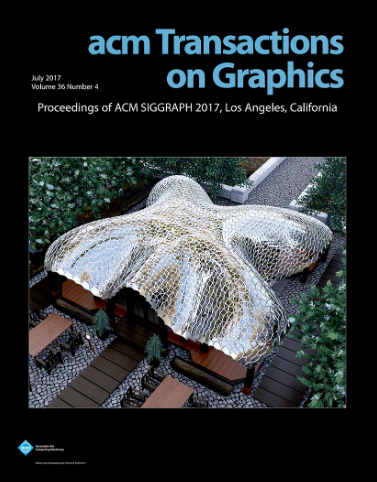Dynamic Mesh Processing on the GPU
IF 9.5
1区 计算机科学
Q1 COMPUTER SCIENCE, SOFTWARE ENGINEERING
引用次数: 0
Abstract
We present a system for dynamic triangle mesh processing entirely on the GPU. Our system features an efficient data structure that enables rapid updates to mesh connectivity and attributes. By partitioning the mesh into small patches, we process all dynamic updates for each patch within the GPU's fast shared memory. This approach leveragesGPU上的动态网格处理
我们提出了一个完全基于GPU的动态三角网格处理系统。我们的系统具有高效的数据结构,可以快速更新网格连接和属性。通过将网格划分为小补丁,我们在GPU的快速共享内存中处理每个补丁的所有动态更新。这种方法利用推测处理来处理冲突、最小化回滚成本、最大化并行性和减少锁定开销。此外,我们还引入了一种新的动态网格处理编程模型。该模型为动态更新提供了简洁的语义,抽象了并行执行期间对冲突更新的关注。我们模型的核心是空腔操作符,这是一个通用的网格更新操作符,它通过删除一组网格元素并将新元素插入到生成的空腔中来促进任何动态操作。我们将我们的系统应用于各种GPU应用程序,包括各向同性网格重新划分,表面跟踪,网格抽取和Delaunay边缘翻转。在大输入时,与多线程CPU解决方案相比,我们的系统实现了一个数量级的加速,比最先进的单线程CPU解决方案快两个数量级。此外,我们的数据结构在速度和内存效率方面都优于最先进的GPU静态数据结构。
本文章由计算机程序翻译,如有差异,请以英文原文为准。
求助全文
约1分钟内获得全文
求助全文
来源期刊

ACM Transactions on Graphics
工程技术-计算机:软件工程
CiteScore
14.30
自引率
25.80%
发文量
193
审稿时长
12 months
期刊介绍:
ACM Transactions on Graphics (TOG) is a peer-reviewed scientific journal that aims to disseminate the latest findings of note in the field of computer graphics. It has been published since 1982 by the Association for Computing Machinery. Starting in 2003, all papers accepted for presentation at the annual SIGGRAPH conference are printed in a special summer issue of the journal.
 求助内容:
求助内容: 应助结果提醒方式:
应助结果提醒方式:


